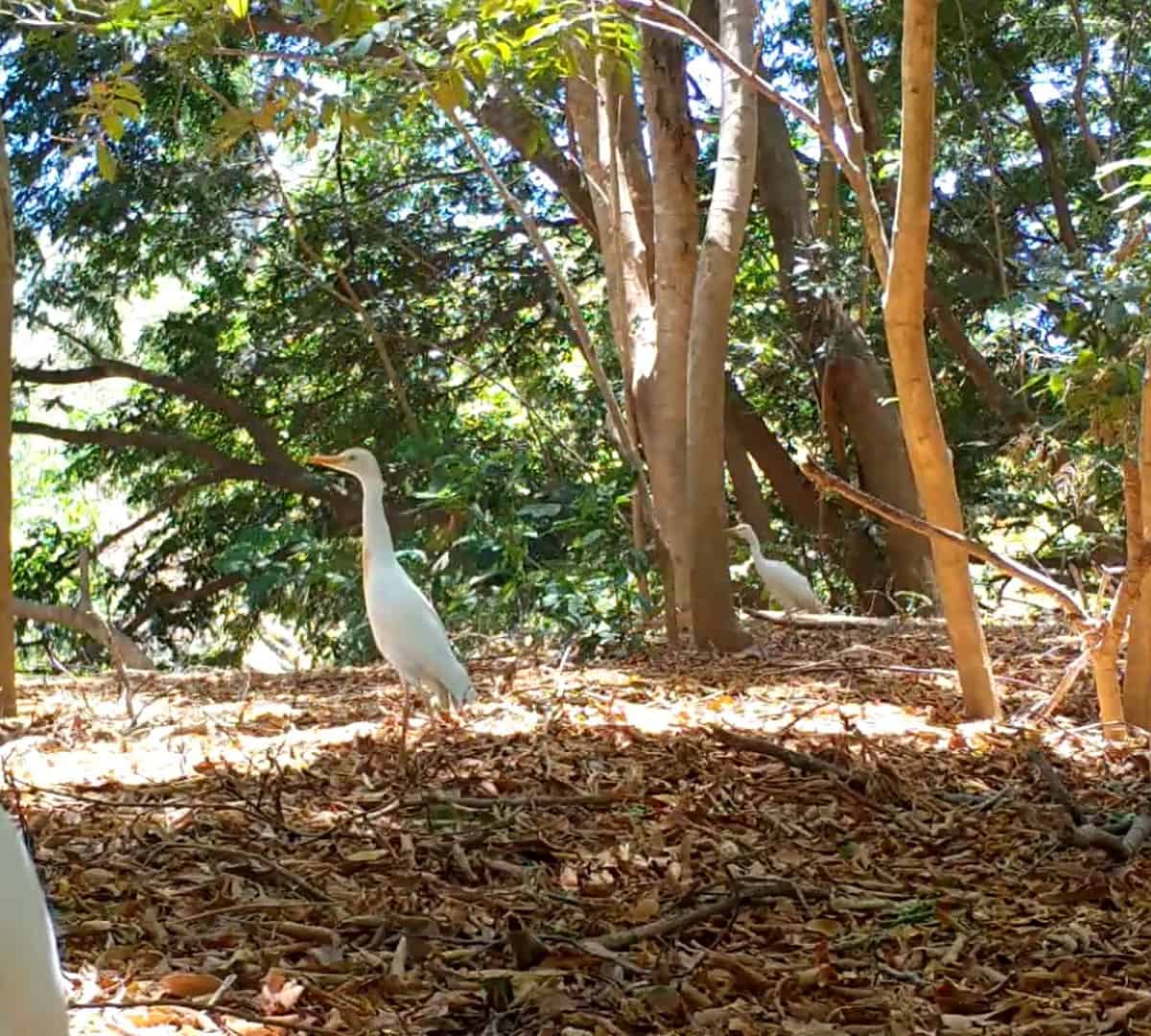Meet the cattle egret, a bird, that like many of us, isn’t from Costa Rica but came for a visit and decided to stay.
The cattle egret (Bubulcus ibis), or garza del ganado in Spanish, is a stocky little white heron. It can be differentiated from the other similar looking species by its size or beak color. It’s much smaller than the great egret. Snowy egrets and juvenile little blue herons are also white, but they have dark beaks, unlike the cattle egret’s yellow beak.
It adds a little spice to its all-white attire during mating season when the top of its head, its chest, and a spot on its back turn orangish. During mating season, its legs brighten from a grayish-yellow to red, which I find interesting simply because I normally think of plumage as the only thing that changes color during mating season.
As you’d imagine, cattle egrets have a relationship with cattle. That relationship is based on their diet. Cattle egrets enjoy eating grasshoppers and other insects. Since many insects have evolved to blend in beautifully with their vegetative surroundings, cattle egrets could find themselves in a bit of a Where’s Waldo situation while trying to find lunch.
They circumvent this issue by allowing the cattle to do all of the work for them. As cows (or horses) slowly trudge through fields of grass, they frighten well-hidden insects into evasive maneuvers and the cattle egrets take that opportunity to gobble them up.
While exploring Costa Rica’s wild places it can be easy to think that you’re venturing into an unchanging world where all of the creatures have found their niches long ago, but the cast of characters in these tropical environments are dynamic with species coming and going. The cattle egret is an interesting example of a recent addition to Costa Rica’s species list.
The first cattle egret sighting in Costa Rica was reported in 1954. Originally being native to southern Europe, Africa and parts of Asia, it began an expansion to the Americas around 1877 when it was spotted in Guiana and Suriname apparently having flown over the Atlantic Ocean. From there in the following decades, it expanded south to the bottom of South America and north to Canada.
For many years, when cattle egrets were still new to Costa Rica, almost every individual from around the country would fly to the well-named Isla Pájaros for breeding season. As the population expanded, the birds outgrew this one nesting site and expanded to new breeding colonies in different parts of the country.
I see cattle egrets in the wild (well, the wilds of cow pastures) very frequently. I’ve also seen them around bodies of water where they like to roost in overhanging trees during the night. I honestly don’t love recording them with my camera traps because recording cattle egrets means I’m recording cows, and cows are notorious for knocking over camera traps.
I recorded one cattle egret video that I’m particularly smitten with along the Río Cañas when one individual gave the camera lens a long, hard stare. I’ll include it in the video below.
About The Author
Vincent Losasso, founder of Guanacaste Wildlife Monitoring, is a biologist who works with camera traps throughout Costa Rica. Learn more about his projects at: Instagram and facebook or by email.






